Yesterday & Today: Church of God in Christ —
By John Mark Richardson, Sr. —
The Church of God in Christ (COGIC), a Holiness-Pentecostal denomination, has a deep spiritual heritage dating back to over 128 years. It has become one of the largest denominations in the United States and is the largest Holiness-Pentecostal denomination worldwide. It is a rich tapestry woven from the threads of African American faith, experience, suffering, resilience, hope, and community.
The COGIC was founded by Bishop Charles Harrison Mason, Sr., who was born on September 8, 1866, (although some records have 1864) in Shelby County, Tennessee, just over a year after the end of the Civil War. He was the son of former slaves and worked alongside his parents as sharecroppers throughout his adolescent years.
Mason grew up during a difficult and challenging era in America, particularly for African Americans. In a nation that had just torn itself apart primarily over the preservation of slavery and Southern states’ rights, survival was no easy feat.
The family of Bishop Mason faced the pervasive and devastating poverty that afflicted many Black individuals and families and Black communities following the Civil War. Amid this turmoil, Mason’s mother fervently prayed for her son, asking that he would be dedicated to God. Her prayers had a profound impact, inspiring the young Charles Mason to not only dedicate himself to God but also to incorporate daily prayer into his life. He earnestly prayed alongside his mother, asking above all things for God to grant him a religion like the one he had heard about from the old slaves and seen exemplified in their lives. This deep yearning for the God of his forebears became a central theme in his life, shaping his spirituality and purpose.
In 1880, just before his fourteenth birthday, Mason fell gravely ill with chills and fever, leaving his mother in despair over his life. However, in an astounding turn of events, he experienced a miraculous healing on the first Sunday of September that year. Eager to express their gratitude, Mason, along with his mother and siblings, attended church the following Sunday, at the Mt. Olive Baptist Church near Plumerville, Arkansas. An atmosphere of praise and thanksgiving enveloped the congregation as Mason’s half-brother, the pastor, baptized him, marking a transformative moment in Mason’s life after surviving a near-death experience.
During this moment of celebration, Mason said to his family and the local parishioners, “I believe God has healed me for the express purpose of alerting me to my spiritual duty.” From that moment on, Mason acknowledged and felt called into full-time ministry throughout his teenage and young adult years. His gratitude to God for his miraculous healing, his profound love for God, and his yearning to experience God like the saints of old fueled his desire to serve in ministry and live a life pleasing to God.
Mason’s Holiness Influencers
This deep sense of purpose and spiritual awakening naturally drew Mason towards the Holiness movement, which was making great strides in America during the 19th Century. This movement emphasized personal piety, sanctification, and a deeper, experiential faith, where adherents sought to experience God’s grace and power in transformative ways. Consequently, Mason attended various Holiness meetings and embarked on a quest to explore the Holiness movement further, eager to understand sanctification and embrace the sanctified life.
Mason’s readings on holiness and entire sanctification by various writers — John Wesley in particular — helped him establish roots in the Wesleyan tradition. John Wesley, the founder of Methodism, championed the notion of personal holiness and social justice. Mason embodied these Wesleyan distinctives, and the Wesleyan Quadrilateral — scripture, tradition, reason, and experience — shaped Mason’s theological framework, integrating biblical authority, rich traditions, and vibrant spiritual experiences.
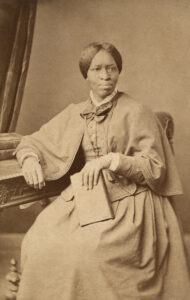
Additionally, and more importantly, Sister Amanda Berry Smith’s Holiness’s writings helped shape Mason’s beliefs and teachings that would lead to the Church of God in Christ’s deeply held beliefs and practices. Amanda Smith (pictured below) was a notable figure in the Holiness movement during the late 19th century. She was an African American evangelist, writer, and one of the first Black women to gain prominence in the Holiness and Pentecostal movements.
Amanda Smith’s writings and preaching focused on holiness and empowerment, significantly influencing many, including Bishop Charles H. Mason. Her work highlighted the importance of spiritual transformation and the experience of entire sanctification — a doctrine asserting that believers could attain a second work of grace that cleansed them from sin and empowered them for holy living and service in the present world. This doctrine resonated deeply within the African American church community, particularly for the Church of God in Christ and Bishop Mason, who claimed the grace of divine sanctification after reading Sister Amanda Smith’s autobiography.
After immersing himself in the writings of John Wesley, Sister Amanda Smith, and others, and experiencing entire sanctification during prayer, Mason’s life was transformed. However, his teachings on holiness and his fervent discussions about spiritual empowerment caused significant friction with the established order of the Baptist Church. In the 1890s, as he began advocating for sanctification and a more spirited form of worship, he found himself at odds with church authorities. His passionate emphasis on holiness was viewed as radical and contrary to traditional Baptist teachings.
Excommunication, Disputes, and Disfellowship
This escalating tension reached a culmination when Mason was formally excommunicated from the Baptist Church due to his beliefs and teachings regarding holiness. Consequently, this pivotal moment motivated Mason to team up with a former Baptist Pastor, Reverend Charles Price Jones, who was expelled from his pastorate for preaching holiness. These two incredible leaders collaborated to promote and disseminate the Holiness message more broadly. They did this through preaching, revivals, planting Holiness churches, providing guidance to pastors and churches wanting to embrace the holiness life, publishing literature, and writing inspired hymns and songs of praise.
This holiness fellowship and movement, led by two influential African Americans, attracted many to their cause. During this time, Bishop Mason (pictured below) received a revelation from God. In 1897, while walking and praying on a street in Little Rock, Arkansas, he heard God speak to him: “If you choose the name Church of God in Christ [based on 1 Thessalonians 2:14], there will never be a building big enough to hold all the people I will send your way.”
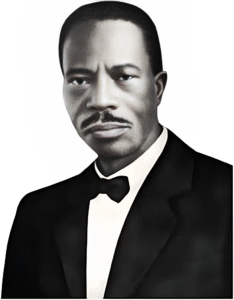 To this, Bishop Mason replied, “Yes, Lord!”
To this, Bishop Mason replied, “Yes, Lord!”
The collaboration between Mason and Jones was a beautiful but short-lived moment. Mason eventually experienced disfellowship from Reverend Charles Price Jones and others with whom he had served in ministry. After returning from the Azusa Street revival in Los Angeles, California, Mason’s report about the events he witnessed and his personal testimony of baptism in the Holy Spirit and speaking in tongues were met with skepticism, criticism, and resistance. However, what Mason experienced at the Azusa Street revival reaffirmed his belief that God had more for His people to experience and receive — a third work of grace: power!
Mason was profoundly impacted by the outpouring of the Holy Spirit during the Azusa Street Revival, which manifested through various signs, including speaking in tongues, healings, and a deep sense of community among diverse groups of people. His reports highlighted the revival’s emphasis on holiness, the power of prayer, miracles, and the importance of evangelism.
Mason also noted the racial and cultural diversity present at Azusa Street, which broke down barriers between African Americans and Whites, creating a unique space for unity in worship. This experience of inclusiveness informed his later work in establishing COGIC as a vital denomination within the Holiness and Pentecostal movements.
The disfellowship was a painful experience. Mason and Jones were dear friends, and many in the group were close to Mason. Although Jones and Mason could no longer serve in the ministry together, they continued to respect each other as leaders and loved each other as brothers. Ultimately, Jones would establish a different faction of the Holiness movement, Church of Christ Holiness U.S.A., while Mason continued to promote his distinctive teachings and practices.
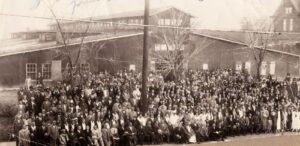
COGIC Holy Convocation, 1938. Courtesy Charles H. Mason & Mother Lizzie Robinson Museum (COGIC Museum)
The Formal Establishment of COGIC
By 1907, the seeds had been sown for the formal and legal organization of the COGIC. That year, Mason held a gathering in Memphis, Tennessee, where he officially established the Church of God in Christ as its own denomination.
This organizational meeting laid the groundwork for what would become a significant movement within the American religious landscape. Mason’s leadership was affirmed during this gathering as he was recognized for his theological vision, charismatic personality, and commitment to evangelism and spiritual empowerment. The attendees, composed of various clergy and laypersons inspired by Mason’s teachings and leadership, were the Church of God in Christ’s first General Assembly, and they voted to elect Bishop Charles Harrison Mason as the first Bishop of the COGIC.
The news and outcomes from this meeting attracted a diverse group of adherents to the Church of God in Christ, including many white congregants and preachers impacted directly or indirectly by the Azusa Street Revival, and who resonated with the tenets of Holiness. They embraced the radical inclusivity suggested by Galatians 3:28: “that in Christ, all believers are equal, regardless of their ethnic or social background.” As one affirmed, “the color line was washed away by the blood.”
An Interracial Denomination
From 1907 to 1914, the COGIC was arguably the largest interracial denomination worldwide. In congregations of the Church of God in Christ, black and white saints worked, worshiped, and evangelized together in an interracial, egalitarian fellowship modeled after the fellowship at Azusa Street. This occurred throughout the South, including Mississippi, Tennessee, Arkansas, Florida, Louisiana, Alabama, and Georgia, during a particularly racially tense time in the United States.
Additionally, because the Church of God in Christ was legally incorporated, they could ordain clergy whose status civil authorities would recognize. Clergy who wished to perform marriages and other ministerial functions that had legal consequences needed this official recognition. Mason also played a crucial role in carrying out the Azusa Revival from its movement phase to its denominational phase. Through Mason’s influence, scores of white ministers sought ordination at the hands of Mason. Therefore, large numbers of white ministers obtained ministerial credentials carrying the name of the Church of God in Christ.
Many white brothers and sisters who formed the Assemblies of God had been part of the Church of God in Christ from 1907 to 1914, during which time Bishop Mason ordained about 350 white ministers. In 1914, the Assemblies of God was organized, and in the second week of April that year, Mason traveled to Hot Springs, Arkansas, to attend the organizing meeting of the Assemblies of God. He preached on Thursday night, illustrating the wonders of God by holding up an unusually shaped sweet potato. He sang his spontaneous improvisation of spiritual songs that Daniel Payne in 1879 referred to as “corn field ditties.” With Mason were the “Saints Industrial” singers from Lexington, Mississippi. Mason bid the white leaders a warm farewell and gave his blessing for the white ministers to form their own organization. He also gave them permission to void their Church of God in Christ credentials in order to switch to those of their new denomination.
Bishop Mason’s Tenure and Accomplishments
During his tenure as founder and first Bishop of the Church of God in Christ, Bishop Mason led the church through phenomenal growth while championing civil rights and social justice. He actively worked to create a more equitable society, standing against racism and Jim Crow discriminatory practices, all while supporting the United States government in its fight against Nazism and Fascism.
He oversaw the construction of the largest African American church campus of the early 20th century, featuring a sanctuary that seated five thousand worshippers. This historic landmark campus was where Dr. Martin Luther King Jr. delivered his famous “I’ve Been to the Mountaintop” speech — just a day before he was tragically assassinated.
Above all, Bishop Mason was a holiness preacher, inspiring people to live free from sin. He was also unapologetically Pentecostal, embracing the gifts of the Spirit and advocating for baptism in the Holy Spirit and the fruits of the Spirit.
Following Bishop Mason
Bishop Charles Harrison Mason, Sr., the beloved founder and first Bishop of the Church of God in Christ, died November 17, 1961. He served the denomination he founded for fifty-four years. Since the death of Bishop Mason, seven leaders have served as Presiding Bishop: Ozro Thurston Jones Sr. (1962–1968); James Oglethorpe Patterson Sr. (1968–1989); Louis Henry Ford (1990–1995); Charles David Owens (1995–2000); Gilbert Earl Patterson (2000–2007); Charles Edward Blake (2007–2021); and John Drew Sheard (2021–pictured below).
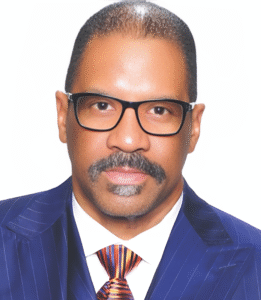 Bishop Sheard of Detroit, Michigan, serves as COGIC’s Presiding Bishop, embodying the spirit of Bishop Mason in his leadership. He has been a gracious and kind leader, guiding COGIC into a time of organizational peace, unity, prosperity, and national and international influence. He has coordinated the completion of major building projects, repaired and beautified existing structures, paid off existing debt, and responded to national and global crises and tragedies that have impacted the COGIC family. Bishop Sheard has reformed ministerial education and training for clergy, the COGIC Seminary and University, and has helped transition the COGIC into a more digital and innovative era. Bishop Sheard has also led the church in embracing a multi-faceted approach to ministry, prioritizing spiritual growth and evangelism, while maintaining a strong focus on:
Bishop Sheard of Detroit, Michigan, serves as COGIC’s Presiding Bishop, embodying the spirit of Bishop Mason in his leadership. He has been a gracious and kind leader, guiding COGIC into a time of organizational peace, unity, prosperity, and national and international influence. He has coordinated the completion of major building projects, repaired and beautified existing structures, paid off existing debt, and responded to national and global crises and tragedies that have impacted the COGIC family. Bishop Sheard has reformed ministerial education and training for clergy, the COGIC Seminary and University, and has helped transition the COGIC into a more digital and innovative era. Bishop Sheard has also led the church in embracing a multi-faceted approach to ministry, prioritizing spiritual growth and evangelism, while maintaining a strong focus on:
• Youth and Education. The COGIC organization offers programs to engage young people in ministry and service, highlighting the importance of active, informed citizenship.
• Health Initiatives. Recognizing the critical health disparities in many African American communities, COGIC has implemented various health initiatives to promote wellness, access to care, and health education.
• Social Justice Activism. In response to contemporary social issues, COGIC has positioned itself as a leader in the conversation on justice, racism, and equity. This commitment echoes the church’s historical roots in the civil rights movement, as COGIC remains dedicated to lifting the voices of the marginalized.
• Global Outreach. By establishing missions in 112 nations, COGIC transcends geographical and cultural barriers, embodying Christ’s love in action.
• Connecting with the Wesleyan Tradition. The connection between COGIC and the larger Wesleyan family is not simply historical; it is a living relationship characterized by shared values and missions. As denominations continue to navigate modernity, COGIC stands with the Wesleyan movement with its emphasis on holiness and empowerment.
• Embracing Contemporary Challenges
As COGIC embraces its role in today’s society, it is also addressing contemporary challenges its congregants and communities face.
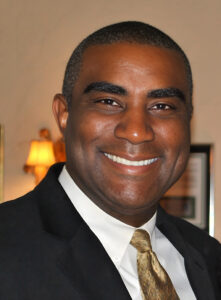
Looking ahead, the Church of God in Christ remains steadfast in its mission to spread the Gospel and serve local and global communities. It is poised not only to influence its members but to inspire churches across different denominations, including those within the Wesleyan family, to respond to the ever-changing landscape of faith and social responsibility.
By John Mark Richardson, Sr., is Regional Bishop, Church of God in Christ (COGIC), and Executive Director, Wesleyan Holiness Connection.

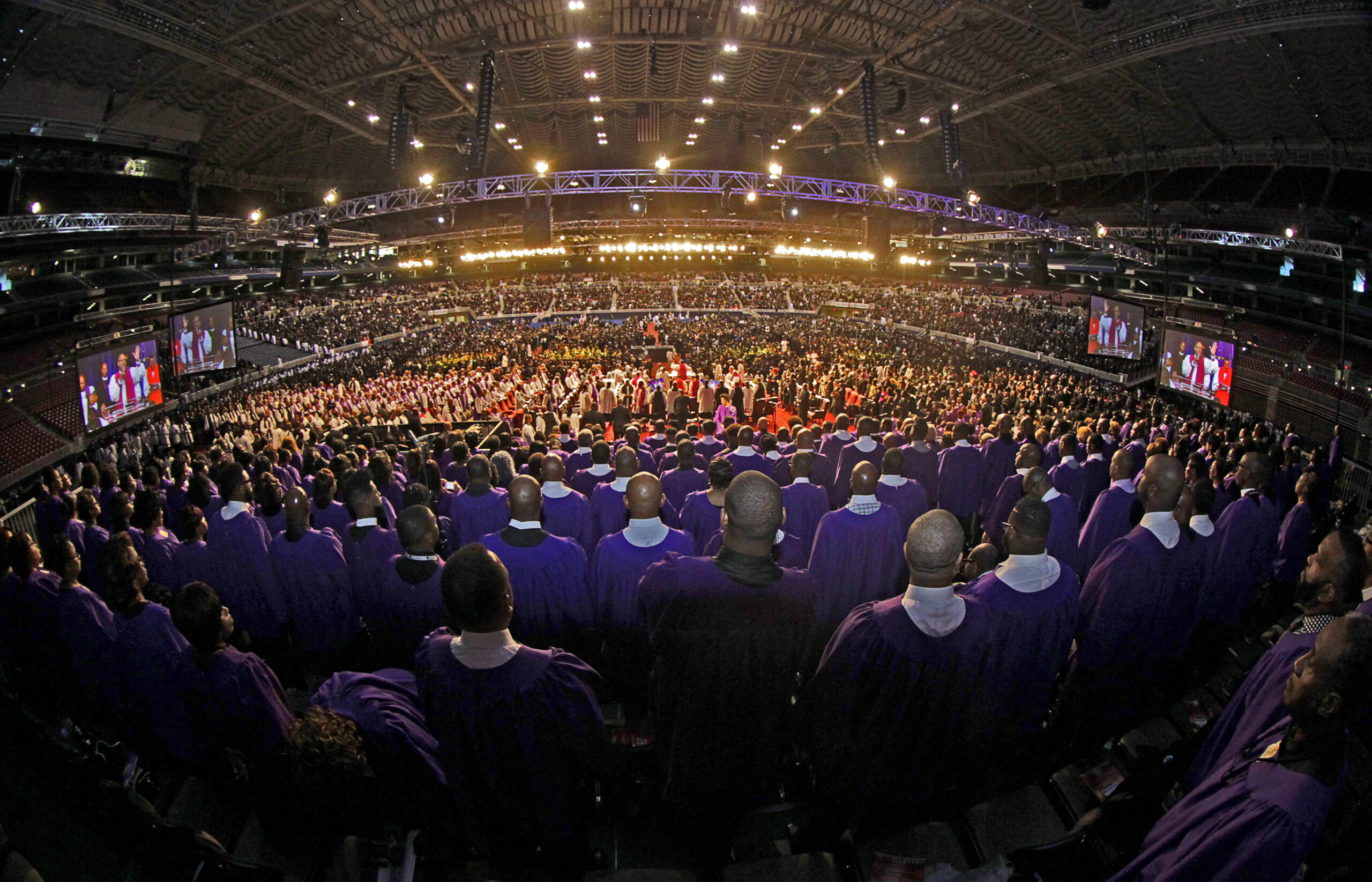


0 Comments